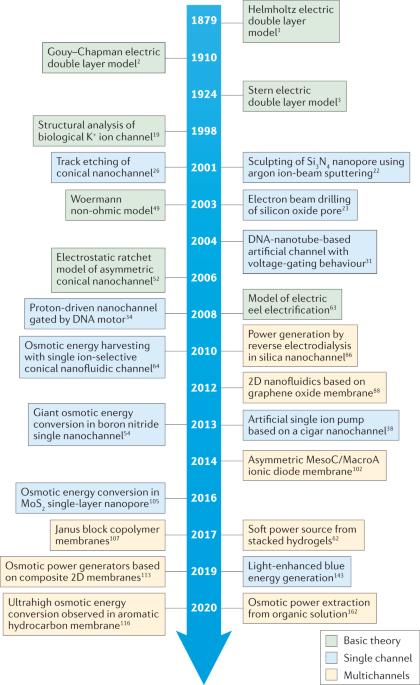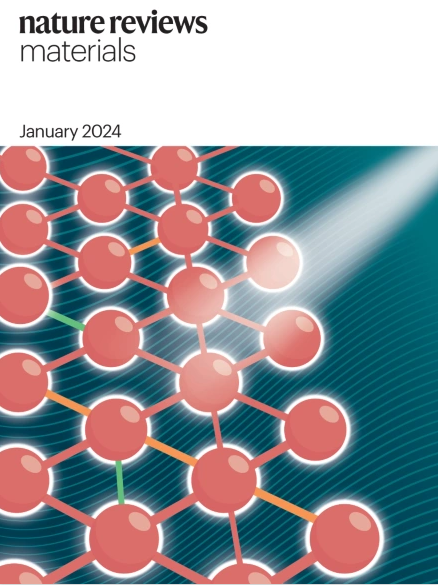Nanofluidics for osmotic energy conversion
IF 86.2
1区 材料科学
Q1 MATERIALS SCIENCE, MULTIDISCIPLINARY
引用次数: 178
Abstract
The osmotic pressure difference between river water and seawater is a promising source of renewable energy. However, current osmotic energy conversion processes show limited power output, mainly owing to the low performance of commercial ion-exchange membranes. Nanofluidic channels with tailored ion transport dynamics enable high-performance reverse electrodialysis to efficiently harvest renewable osmotic energy. In this Review, we discuss ion diffusion through nanofluidic channels and investigate the rational design and optimization of advanced membrane architectures. We highlight how the structure and charge distribution can be tailored to minimize resistance and promote energy conversion, and examine the possibility of integrating nanofluidic osmotic energy conversion with other technologies, such as desalination and water splitting. Finally, we give an outlook to future applications and discuss challenges that need to be overcome to enable large-scale, real-world applications. Osmotic energy conversion is a promising renewable energy source. This Review discusses nanofluidics-based osmotic energy conversion systems, investigating the principles of ion diffusion in nanofluidic systems, optimization of membrane architectures to increase energy conversion and possible integration with other technologies, such as water splitting.

用于渗透能转换的纳米流体
河水和海水之间的渗透压差是一种前景广阔的可再生能源。然而,目前的渗透能转换过程显示出有限的功率输出,这主要是由于商用离子交换膜的性能较低。具有定制离子传输动力学的纳米流体通道可实现高性能反向电渗析,从而高效地获取可再生渗透能。在这篇综述中,我们讨论了通过纳米流体通道的离子扩散,并研究了先进膜结构的合理设计和优化。我们强调了如何调整结构和电荷分布以最大限度地减少阻力和促进能量转换,并探讨了将纳米流体渗透能转换与海水淡化和水分离等其他技术相结合的可能性。最后,我们对未来的应用进行了展望,并讨论了实现大规模实际应用需要克服的挑战。渗透能转换是一种前景广阔的可再生能源。本综述讨论了基于纳米流体的渗透能转换系统,研究了纳米流体系统中的离子扩散原理、优化膜结构以提高能量转换以及与其他技术(如水分离)的可能整合。
本文章由计算机程序翻译,如有差异,请以英文原文为准。
求助全文
约1分钟内获得全文
求助全文
来源期刊

Nature Reviews Materials
Materials Science-Biomaterials
CiteScore
119.40
自引率
0.40%
发文量
107
期刊介绍:
Nature Reviews Materials is an online-only journal that is published weekly. It covers a wide range of scientific disciplines within materials science. The journal includes Reviews, Perspectives, and Comments.
Nature Reviews Materials focuses on various aspects of materials science, including the making, measuring, modelling, and manufacturing of materials. It examines the entire process of materials science, from laboratory discovery to the development of functional devices.
 求助内容:
求助内容: 应助结果提醒方式:
应助结果提醒方式:


